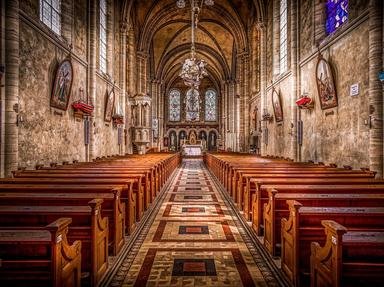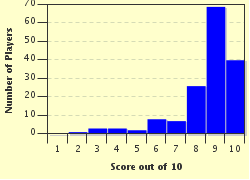Quiz Answer Key and Fun Facts
1. Apart from family prayers every night, our faith began to be taught in earnest by the nuns at primary school. What was the name of this subject beginning with C?
2. As we grew older, we were taught about the Seven Sacraments of the Church, which were all to do with striving towards goodness in the possible steps we may encounter in life. What was it called if a man joined the priesthood?
3. Apart from conferring a name upon an infant and welcoming it into the family of Christ, for what other symbolic liberating purpose was Baptism carried out?
4. Which gifts are given to one by the Sacrament of Confirmation?
5. Which Sacrament celebrates the Last Supper of Christ?
6. What was it called when a parishioner spoke to a priest about the wrongs he or she had done since the last time they spoke on the same topic?
7. In which condition were you when the Sacrament of Extreme Unction was given?
8. What is the name of the canopy that is built over the top of many pulpits in larger and older churches?
9. Which sacrament is to do with the joining of a man and woman in wedlock?
10. Part of the family group worship carried out every night at home during my childhood, was the recitation of what?
Source: Author
Creedy
This quiz was reviewed by FunTrivia editor
looney_tunes before going online.
Any errors found in FunTrivia content are routinely corrected through our feedback system.

